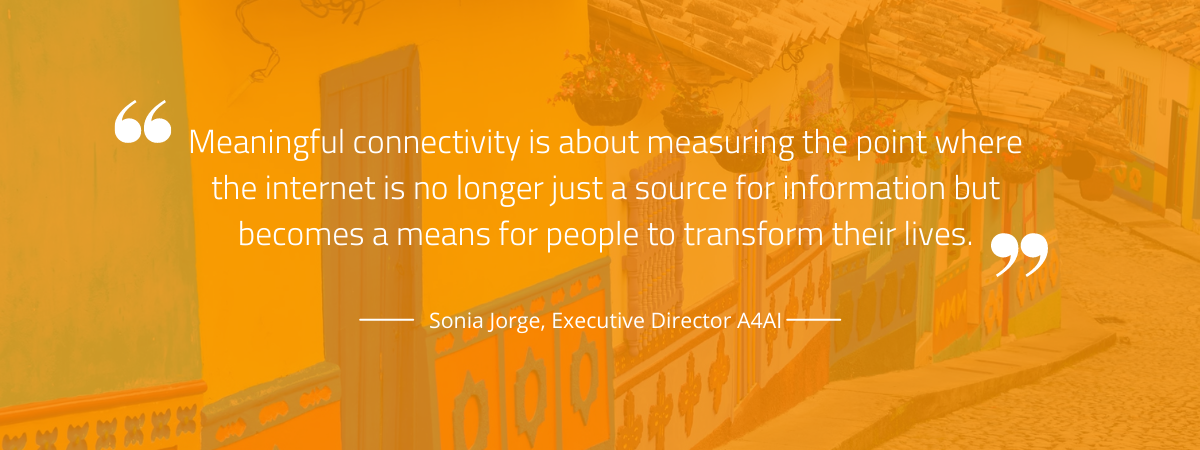A global partnership between the Alliance for Affordable Internet and Opensignal
Ever since the dawn of digital technologies, the challenge of digital exclusion has been pervasive, even with industry, governments and civil society working together to address the so-called “digital divide”. According to the ITU, more than 1 billion new Internet users came online between 2016 and 2021. However, despite this growth, more than 3.7 billion people still do not use the Internet, even in circumstances where they could. This highlights that the issue of digital exclusion is much more nuanced than simply monitoring the deployment of supply-side infrastructure, or assuming that certain speeds mean that people can use available connectivity to engage with mobile services and the digital economy.
In an effort to take tangible action to address these challenges, the Alliance for Affordable Internet (A4AI) draws attention to these more critical elements of digital access to ensure that connectivity is measured in a way which takes the actual human experience into account. They’ve done this by differentiating between passive online consumption and active participation in the digital world. A4AI have termed this approach “Meaningful Connectivity”.

Sonia Jorge, A4AI Executive Director explains, “Meaningful connectivity is about measuring the point where the internet is no longer just a source for information but becomes a means for people to transform their lives. The speed of that connection – for example, 4G-like speeds on mobile broadband – is a crucial indicator for policymakers to understand how widespread meaningful connectivity is in a country and where gaps exist in enabling this technology to change lives.”
As the global standard for mobile network experience, we are delighted to partner with A4AI in supporting their research on meaningful connectivity with real-world data on how everyday users experience mobile networks in their daily life. Our data is not based on predictive models, nor is it generated by testing to a dedicated server, or representing best case scenarios or hypotheses. Instead, it shows the actual experience of real users, providing a truly accurate picture for policymakers and regulators on the areas where the most impactful decisions can be made.
Basic vs meaningful connectivity
Since the onset of Covid-19, it’s clear that internet access is even more fundamental to how we work, study, create, and play. During the pandemic, many of us moved to remote working, virtual classrooms, and online health appointments. But many people were unable to join online courses, access financial services or even obtain critical public health information, further compounding social exclusion and economic hardship. This group includes millions of people who have access to a mobile internet connection but cannot connect consistently, don’t have a sufficient data allowance (there can be a variety of reasons for this), don’t perceive any value-add from enhanced digital connectivity (e.g. a 4G connection) or lack access to a smartphone.
Measured across four different dimensions– regular internet use, appropriate device, enough data, and connection speed – Meaningful Connectivity provides a forward-thinking way of looking at the digital divide: turning the spotlight on those who are unable to fully participate in the digital world due to an array of reasons ranging from affordability through to coverage.
A4AI’s inaugural report on meaningful connectivity examined nine low- and middle-income countries. Following on from this, A4AI published country-level deep dive briefings which provide evidence-based policy recommendations for Indonesia, Bangladesh and most recently, Colombia.
4G user experience in Colombia
Based on data collected September through to November 2021, we’ve observed a steady rise in mobile network connectivity in Colombia, resulting in generally high levels of 4G access compared to peer countries. However, there is still a clear divide among the country’s regions, with 4G Availability ranging from 57.1% in Amazonas to 88.9% in the Atlantico region.
When failing to connect to a 4G signal, users need to fall back on 3G or can even be left with no connection at all. This has a significant impact on network speeds and ultimately on their experience with the most popular applications, including video, voice and games apps.
For the full briefing including A4AI’s policy recommendations for improving connectivity in Colombia, click through (in English and Spanish).
Opensignal Limited retains ownership of this insight including all intellectual property rights, data, content, graphs & analysis. Reports and insights produced by Opensignal Limited may not be quoted, reproduced, distributed, published for any commercial purpose (including use in advertisements or other promotional content) without prior written consent. Journalists are encouraged to quote information included in Opensignal reports and insights provided they include clear source attribution. For more information, contact [email protected].
